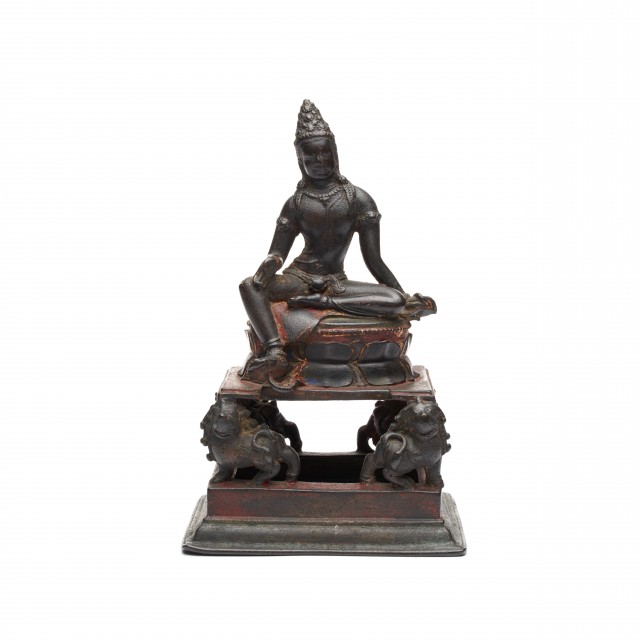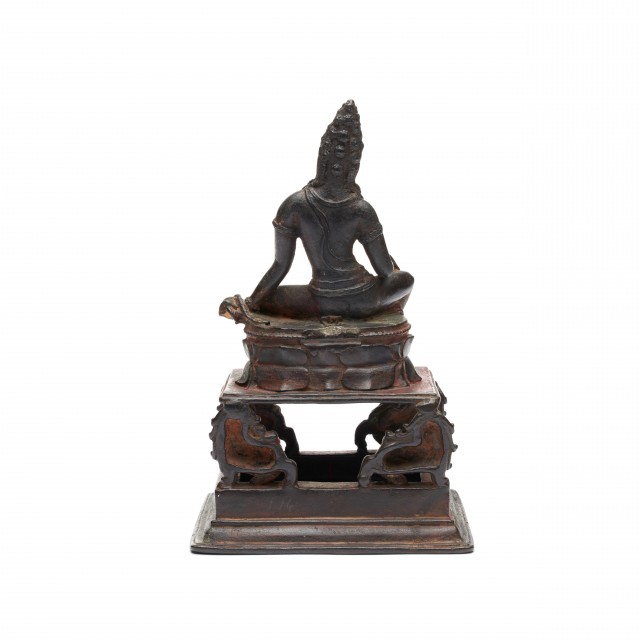
Bodhisattva

Photography by Synthescape, Digital image © Asia Society

Photography by Synthescape, Digital image © Asia Society
Bodhisattva
8th century
Thailand
Copper alloy with traces of gilding and pigment
H. 8 3/4 x W. 5 1/2 x D. 4 3/8 in. (22.2 x 13.97 x 11.11 cm)
Asia Society, New York: Gift from The Blanchette Hooker Rockefeller Fund, 1994.5
Licensing inquiries
This bodhisattva is seated on a lion throne in the posture of royal ease (lalit asana) and makes the gesture of gift-giving (varada mudra) with his right hand. There is no image in his headdress and he holds only the broken end of a lotus stem in his left hand so he remains unidentifiable. The traces of gilding and red and blue pigment that are present may not be original but are suggestive of the image's once brightly painted appearance. A hole found in the back of the lotus pedestal indicates that the image would once have had a body halo (mandorla) behind him. The similarities in configuration, body type, jewelry, and hairstyle between this bodhisattva and a figure of the Bodhisattva Manjushri also in the collection suggest that both were made at the same place, possibly in southern Thailand. They belong to the Shrivijayan tradition of sculpture.


